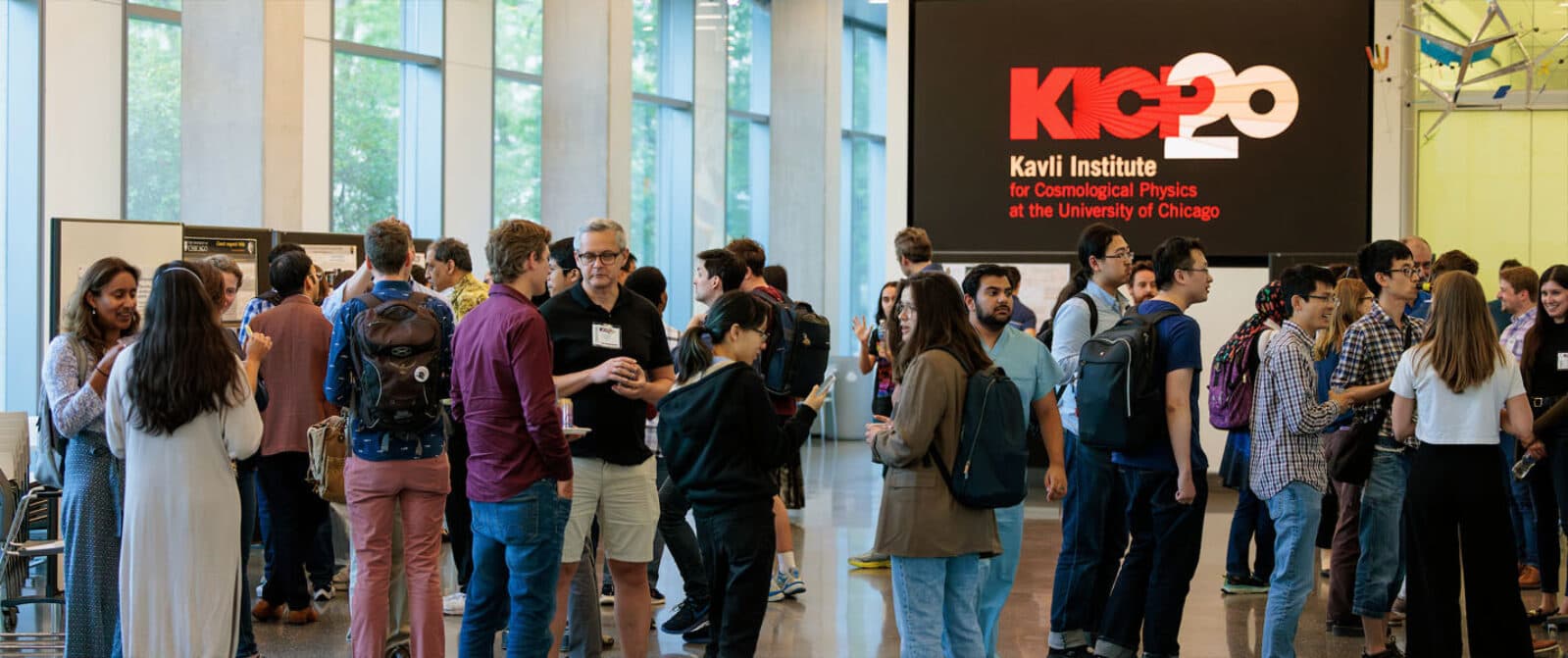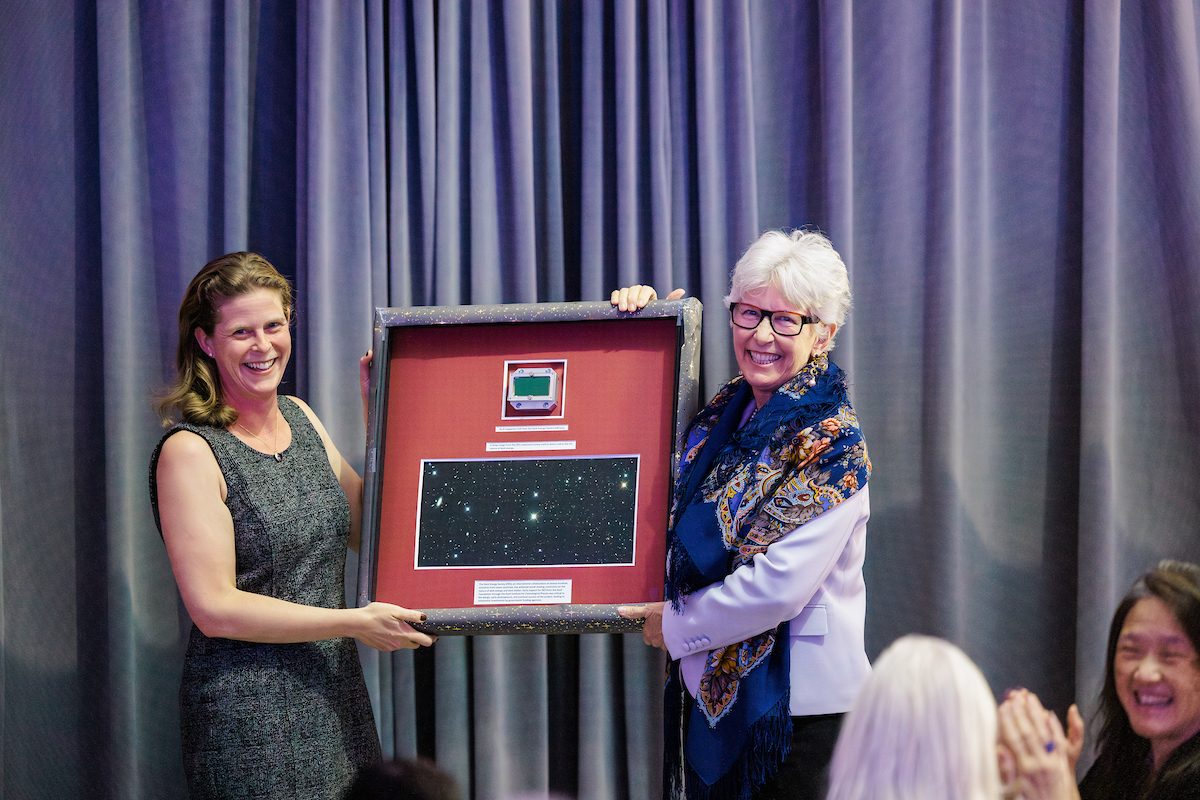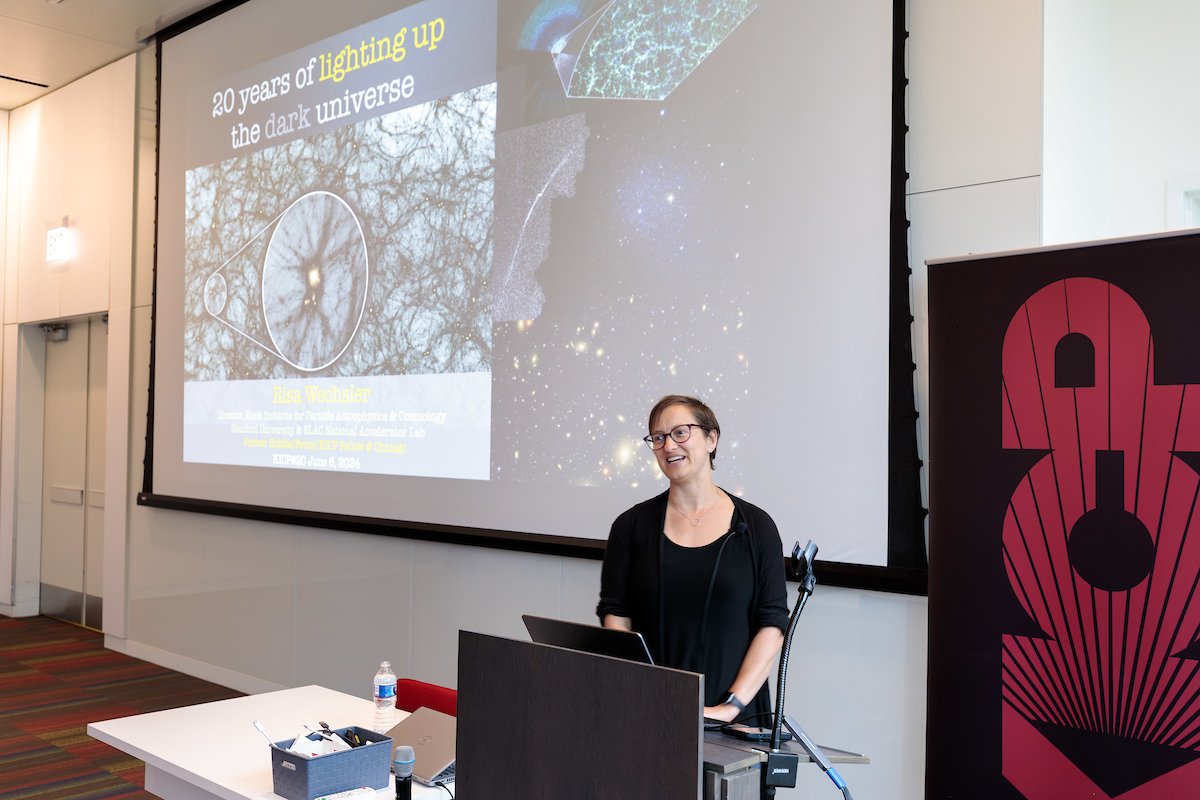Pushing the Envelope for Cosmology and Astrophysics
by Adam Hadhazy
With the Kavli Institute for Cosmological Physics celebrating its 20th anniversary, Abigail Vieregg looks forward to building on the institute’s successes

The Author
For a field that encompasses eons of time and septillions of miles of space, cosmology can sure move quickly.
In the two decades since The Kavli Foundation established the Kavli Institute for Cosmological Physics (KICP) at the University of Chicago, cosmology and its close scientific cousin, astrophysics, have advanced significantly.

Consider that in 2004, researchers could just barely glimpse early galaxies from when the universe was roughly a billion years old—galactic toddlers, in a sense. Now, observing power can see all the way back into the very cradle where infant galaxies are developing, a mere few hundred million years post-Big Bang. Our view of the relic afterglow of the Big Bang itself—via the oldest light in the universe, known as the cosmic microwave background—has likewise jumped more than ten-fold in sensitivity, revealing critical new details about how this epochal event unfolded.
KICP and its hundreds of members over the years have been key contributors to these and other advances. The wide purview of KICP, from designing detectors to carrying out observations to contextualizing findings within theoretical frameworks, has made the institute an invaluable international scientific team player.
In commemoration of the shared endeavors, KICP celebrated its 20th anniversary in early June in the Windy City, feting with associates past and present at an Adler Planetarium party and through other events. “We planned two and a half days of forward-looking science talks, and of course a celebration,” says Abigail Vieregg, the David N. Schramm Director of KICP.

In looking back at all that has been accomplished, Vieregg eagerly looks forward to all that remains to do.
“This is an institute that brings together physicists and astronomers—from experimentalists, the people who build instruments, to theorists, the people who build ideas,” says Vieregg. “You can really feel the energy at KICP, where we have lots of remarkable researchers and potential. We are already doing a lot and feel like we can do a lot more.”
Vieregg initially joined the UChicago faculty in 2014 and started her three-year term as KICP Director in 2022. She has seen her own specialized field of particle astrophysics, with a focus on ghostly particles called neutrinos, advance hand-in-hand with related fields thanks to the diligence of KICP researchers and their colleagues around the world.
“KICP has evolved over the last 10 years since I have been here, but it has stayed true to the basic principles and ambitions that make KICP great: Bring in good people at all levels and do all we can to help them do their best research,” says Vieregg.
To that end, Vieregg and her predecessors have emphasized the bringing in of new researchers and nurturing their talent through the KICP Postdoctoral Fellowship program, which supports multiple postdocs per year to do their postdoctoral research with access to world-class resources.
“Our star program has always been and continues to be our KICP Postdoctoral Fellowship program,” says Vieregg. “The KICP Fellows really are the centerpiece of our institute, and the glue that brings us all together. Enabling people to do their best research includes creating a community with a lot of interaction and a sense of belonging, providing solid mentoring structures for our postdocs and students, hosting conferences and visitors, and having fun events.”
A primary goal for Vieregg’s directorship has been rekindling the synergistic in-person interactions at KICP that the COVID-19 pandemic had suspended. “I feel like we are now fully back after COVID,” says Vieregg. “It really is thrilling to see everyone back and engaged in our institute. We have so many workshops and conferences planned this year.” For example, KICP expects to host about 400 people for the TeV Particle Astrophysics (TeVPA) international conference in August.
As an example of how KICP is moving science forward, and just in this particle astrophysics space, two new observatories spearheaded by the institute are coming to fruition. Both are specialized ultra-high energy neutrino detectors, geared toward collecting signals unleased by the particles as they reach Earth after distant voyages from powerful cosmic sources such as exploding stars and matter-gobbling black holes.
One of the experiments, RNO-G (Radio Neutrino Observatory Greenland), is under construction and will use hardware built at UChicago. The second, PUEO (Payload for Ultrahigh Energy Observations), is set to launch next year aboard a balloon that will fly over Antarctica. From a vantage point exceeding 25 miles (40 kilometers), PUEO will scan the icescape below for telltale radio signals produced by impacting neutrinos.
On other scientific fronts, KICP also remains in the vanguard—in keeping with the institute’s legacy. Regarding that legacy, Vieregg points in particular to the Dark Energy Survey, a six-year mission that until 2019 observed over 300 million galaxies and thousands of supernovae through a deep sampling of cosmic history, and the South Pole Telescope, which continues to scrutinize the cosmic microwave background and has helped take the first-ever direct images of black holes.
“Two of the biggest successes of KICP have been seeding the Dark Energy Survey and the South Pole Telescope, both of which went on to make great discoveries, and likely would not have been possible without KICP,” says Vieregg.
For now and in the years to come, KICP is playing a leading role in developing CMB-S4, a next-generation observatory for probing the big bang via its relic light. The vast effort involves installing half a million supercooled detectors at 12 new telescopes in Chile and the South Pole.
“We’re making great progress,” says Vieregg. “Our people are really pushing the envelope on instrument building for these new cosmic microwave background experiments, along with particle astrophysics projects and more.”
“After KICP’s first 20 years,” adds Vieregg, “we expect to keep pushing the scientific envelope for another 20 and beyond.”